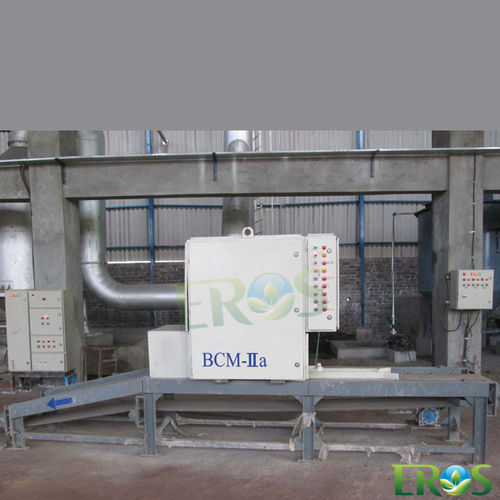Rotary Furnaces Pollution Control Device
Product Details:
- Product Type Furnaces Pollution Control Device
- Material Mild Steel
- Color Silver
- Click to View more
Rotary Furnaces Pollution Control Device Price And Quantity
- 1650000 INR/Unit
- 1 Unit
Rotary Furnaces Pollution Control Device Product Specifications
- Furnaces Pollution Control Device
- Silver
- Mild Steel
Rotary Furnaces Pollution Control Device Trade Information
- 1 Months
- Export Worthy Packaging
- All India
- ISO
Product Description
Rotary Furnace with Air-Pollution Control Device:-
About Rotary Furnace
The Rotary Melting Furnace is a very flexible and universal equipment used for recycling many non-ferrous metals.A lead production system based on this technology has certain distinct characteristics such as:
- Equipment scalable for installing higher capacities
- Recovers all lead in one production cycle
- Plates & powder from scrap battery as well as slag from Mini Blast Furnace can be used as raw material
- Requires addition of certain consumables
- Generates high Pollution both as Flue Gases & Fugitive Emissions
Description of Rotary Furnace
It is a Rotary kiln in the form of a metallic cylinder with conical sides on both ends. Mild steel plate is used for construction of this shell and its thickness varies depending upon the capacity of the equipment. This shell is rotated on its own axis at 1-2 rpm.These are fabricated from MS squares or flats, machined for a smooth finish.These rollers are fitted on a robust MS structural frame and driven by a gear & motor arrangement.
Conical ends of the furnace are open on both sides. The furnace is charged with Raw material along with additives from the front end. This side is provided with a movable door on which a burner is mounted.At the other end, an exhaust block lined with refractory bricks is provided. Flue gases generated are sucked from the exhaust block side of the furnace.
Process Details of a typical 3.0 TpB Rotary Furnace
|
Raw Material Charged |
3000 kgs/ Batch |
|
Total additive chemicals charged |
400-500 kgs/ Batch |
|
Rotational speed |
1-2 RPM |
|
Fuel used |
Furnace Oil |
|
Calorific value of fuel used |
8600 kCal/ kg. |
|
Fuel consumed |
30-40 lt/ hr. |
|
Air provided for process |
1250 cmh |
|
Lead produced |
9000-10000 kg/day (for Raw Material feed of 12-15 TpD; |
|
Flue gas generation |
15000 cmh |
Section View of Rotary Furnace
Advantages and Disadvantages of Rotary Furnace
Advantages
- Recovers 100% lead in the first operation.
- Slag produced is lead free.
- Equipment can be scaled up for higher production capacities.
Disadvantages
- Many chemicals are required for operation.
- High power consumption.
- Fugitive Emissions need to be captured in addition to flue gases.
- Need skilled operators and careful maintenance.
Characteristics of Air Pollution generated in Rotary Furnace
|
Dust |
8000-15000 mg/Nm3 |
|
Temperature |
100-120o C |
|
Gases |
Traces of NOx and SO2 |
Discharge Characteristics required as per Norms
|
Dust |
Less than 50 mg / Nm3 |
|
Lead (Pb) |
Less than 10 mg / Nm3 |

Price:
- 50
- 100
- 200
- 250
- 500
- 1000+
Other Products in 'Lead Recycling Plant' category
(Formerly Eros Consultant)
108-109, 1st Floor, Savitri Complex-1,
Dada Motors Building, Kalsi Nagar,
G.T. Road,
City - Ludhiana 141003
State - Punjab, Country - INDIA.








